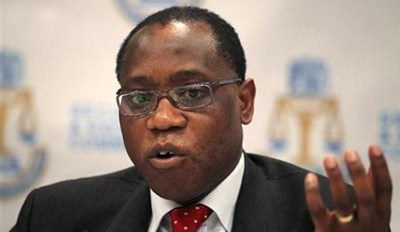The African Development Bank (AfDB) has said that out of the $20.15 billion (N3.204trillion) recorded on the continent in 2012, 95 per cent of it was in South Africa and Nigeria, the two largest African economies.
It made this known in its annual African Economic Outlook that total portfolio investment in Africa in 2012 stood at around $20.15 billion and was expected to increase by 30 per cent to $26.2 billion (N4.166 trillion) in 2013, eclipsing the pre-crisis peak of $22.5 billion in 2006.
The AfDB also gave a forecast of the growth in Africa’s economy at 4.8 per cent and 5.3 per cent in 2013 and 2014 respectively, driven by commodity exporters in West Africa such as Nigeria, Ghana and Ivory Coast.
According to the AfDB, Foreign Direct Investment, FDI, to Africa, was set to rise by more than 10 per cent in 2013, approaching its 2008 record high, with the fast-growing sub-Saharan region likely to receive the majority of inflows.
It however, noted that a weaker global economy and a prolonged crisis in the euro zone could reduce commodity export earnings, overseas aid, migrant remittances and FDI inflows.
The AfDB added that African countries will be heavily dependent on aid with the exception of Nigeria, South Africa, Democratic Republic of Congo, Egypt and Morocco, who will be the major focus on investment inflows into the continent.
The AfDB report noted that FDI is forecast to reach $56.6 billion this year from $49.7 billion last year, short of $57.8 billion recorded in 2008.
The AfDB said, “almost the entire projected increase in FDI to Africa is expected to be in sub-Saharan Africa, while in 2012 northern Africa absorbed half the increase in FDI.
“This confirms sub-Saharan Africa’s economic dynamism as well as the hesitance of investors over political developments in North Africa, particularly in Egypt.
“Africa’s economic prospects depend on global and domestic factors, which are highly uncertain. According to estimates, a one percentage point decline of GDP in OECD member countries causes African GDP to decline by about 0.5 per cent and Africa’s export earnings by about 10 per cent.”
The report said total external financial flows to Africa, including FDI, portfolio investment, official development assistance (ODA) and remittances are projected to reach $203.9 billion in 2013, above a record high of $186.3 billion in 2012.
It added that remittances, which last year overtook FDI and ODA as the largest external source of finance to Africa for the first time, are expected to increase to $64 billion in 2013 from $60.4 billion in 2012.
“But as the euro zone crisis hurts the employment prospects of the African diaspora in Europe, remittances to the continent could grow at a slower pace.
“Africa’s ability to attract higher financial flows after the 2008 crisis reflects improved macroeconomic policies but hides disparities between countries.
“Five countries account for more than 50 percent of total external flows: Nigeria, South Africa, Egypt, Morocco and DRC,” it said. “In contrast, half of African countries rely on aid as the largest external source of finance for development needs,” the AfDB said.
Nigeria is currently the second largest economy in Africa and is set to overtake South Africa when it rebases the calculations of its Gross Domestic Product, GDP, next year which would push its total GDP of $340billion by as high as 60%.



Leave a Reply